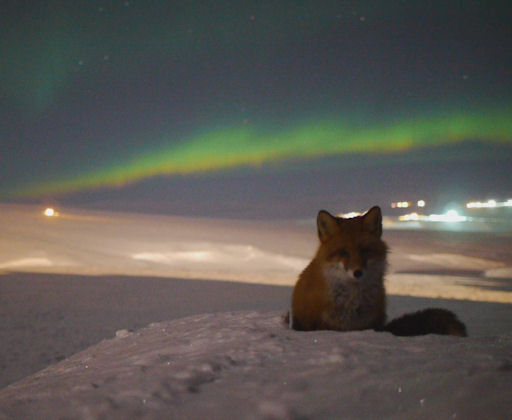QUIET SUN: With the departure of sunspot AR1654, a new spell of low solar activity is underway. NOAA forecasters put the odds of a strong solar flare today at less than 5%. Solar flare alerts: text, voice.
LUNAR ECLIPSE OF JUPITER: Last night, the Moon passed by Jupiter only a fraction of a degree away. In parts of South America, the close encounter was so close, it became an eclipse. Luis Argerich sends this photo from Buenos Aires, Argentina:
"I captured half a Jupiter floating next to the Moon with my telescope as the occultation was in progress," says Argerich. "It was incredible to see Jupiter disappear behind the Moon's dark limb."
Another occultation of Jupiter is less than a month away. The people of southern Australia will see it on Feb. 18th. Meanwhile, browse the photo gallery for more shots of last night's display.
Realtime Moon-Jupiter Photo Gallery
AWASH IN JUPITER RADIO BURSTS: The planet Jupiter is a powerful source of shortwave radio bursts. They come from natural radio lasers in the giant planet's polar magnetosphere that sometimes sweep past Earth as Jupiter rotates. On Jan. 21st, as Jupiter and the Moon were converging for their Monday conjunction, a series of Jupiter's radio laser beams hit Earth. Amateur astronomer Thomas Ashcraft recorded the static-y sounds coming from the loudspeaker of his shortwave radio telescope in New Mexico:

Dynamic spectrum courtesy of Wes Greenman, Radio Alachua Observatory
"Sometimes when people are outside Jupiter-gazing they might also be awash in Jovian radio beam sweeps and not know it," says Ashcraft. "On Sunday, a Jovian radio storm produced a few minutes of strong radio waves. As I was outside my observatory looking up at Jupiter I was also hearing the waves on my radio telescope speakers and realized that my own body was, in that moment, being bathed in electromagnetic beams from Jupiter. What a nice feeling!"
Realtime Space Weather Photo Gallery
NORTHERN LIGHTS: A CME hit Earth's magnetic field during the late hours of Jan. 19th, producing Northern Lights so bright, they woke up the Arctic fox:
Vladimir Scheglov sends the picture from the Kupol mine in the Chukotka region of Russia. "The Kupol mine has banned hunting, so wild animals are not afraid of people," he explains.
More lights are possible on Jan. 23th when a negative-polarity solar wind stream is expected to hit Earth's magnetic field. NOAA forecasters estimate a 20% chance of polar geomagnetic storms. Aurora alerts: text, voice.

![]()
Solar wind
speed: 297.6 km/sec
density: 1.6 protons/cm3
explanation | more data
Updated: Today at 0037 UT
![]()
X-ray Solar Flares
6-hr max: B5 2120 UT Jan22
24-hr: B7 1033 UT Jan22
explanation | more data
Updated: Today at: 2359 UT
![]()
![]()
![]()
Daily Sun: 22 Jan 13
![]()
![]()
None of these sunspots is actively flaring. Solar activity is low. Credit: SDO/HMI
![]()
![]()
![]()
Sunspot number: 50
What is the sunspot number?
Updated 22 Jan 2013
Spotless Days
Current Stretch: 0 days
2013 total: 0 days (0%)
2012 total: 0 days (0%)
2011 total: 2 days (<1%)
2010 total: 51 days (14%)
2009 total: 260 days (71%)
Since 2004: 821 days
Typical Solar Min: 486 days
Update 22 Jan 2013
The Radio Sun
10.7 cm flux: 108 sfu
explanation | more data
Updated 22 Jan 2013
![]()
![]()
![]()
Current Auroral Oval:
![]()
Switch to: Europe, USA, New Zealand, Antarctica
Credit: NOAA/POES
![]()
![]()
![]()
Planetary K-index
Now: Kp= 0 quiet
24-hr max: Kp= 0 quiet
explanation | more data
![]()
Interplanetary Mag. Field
Btotal: 3.6 nT
Bz: 1.2 nT south
explanation | more data
Updated: Today at 0037 UT
![]()
![]()
![]()
Coronal Holes: 21 Jan 13
![]()
![]()
Solar wind flowing from this southern coronal hole should read Earth approximately five days from now. Credit: SDO/AIA.






